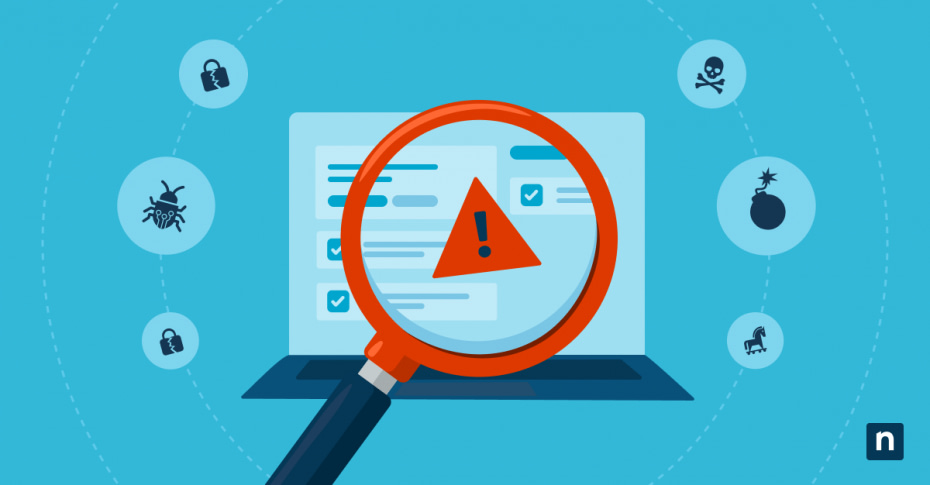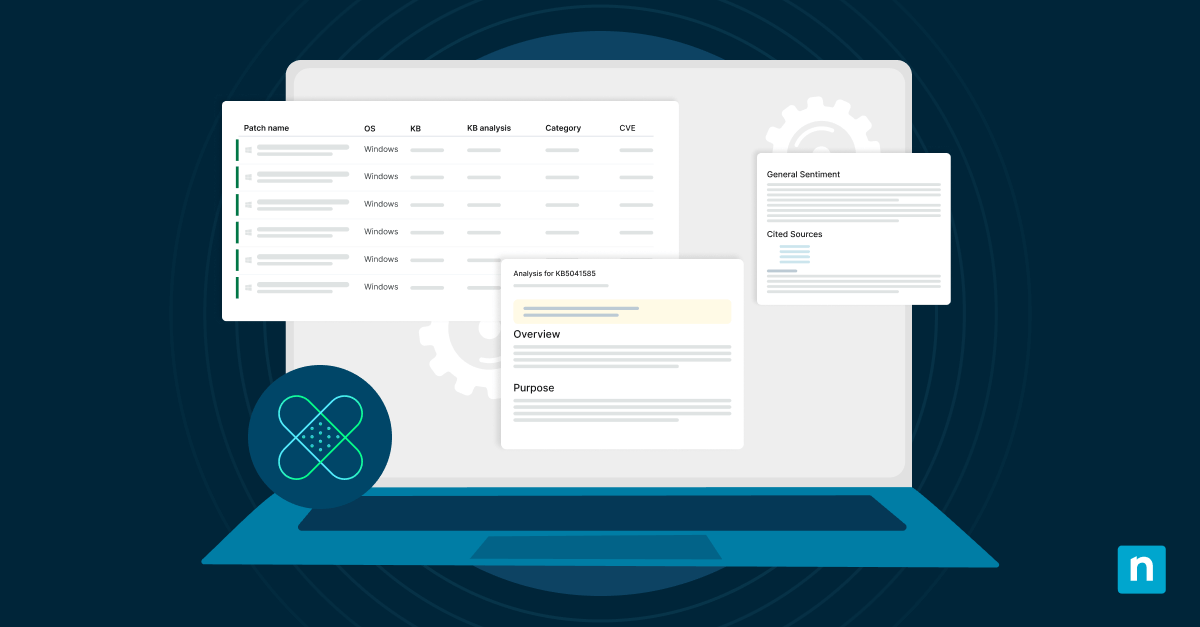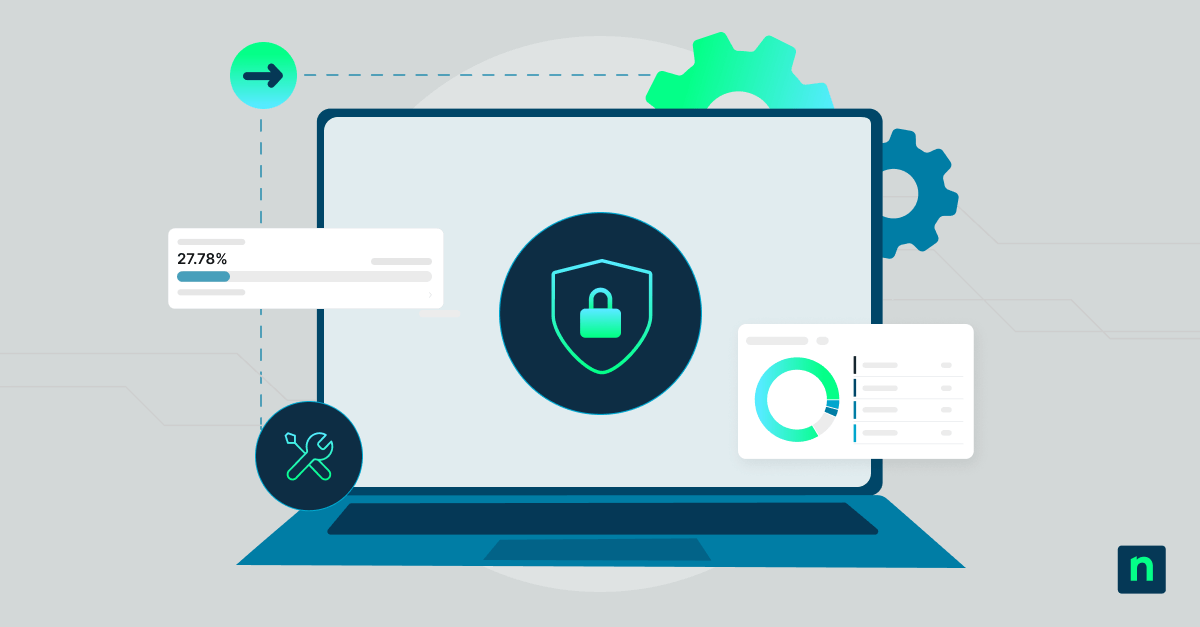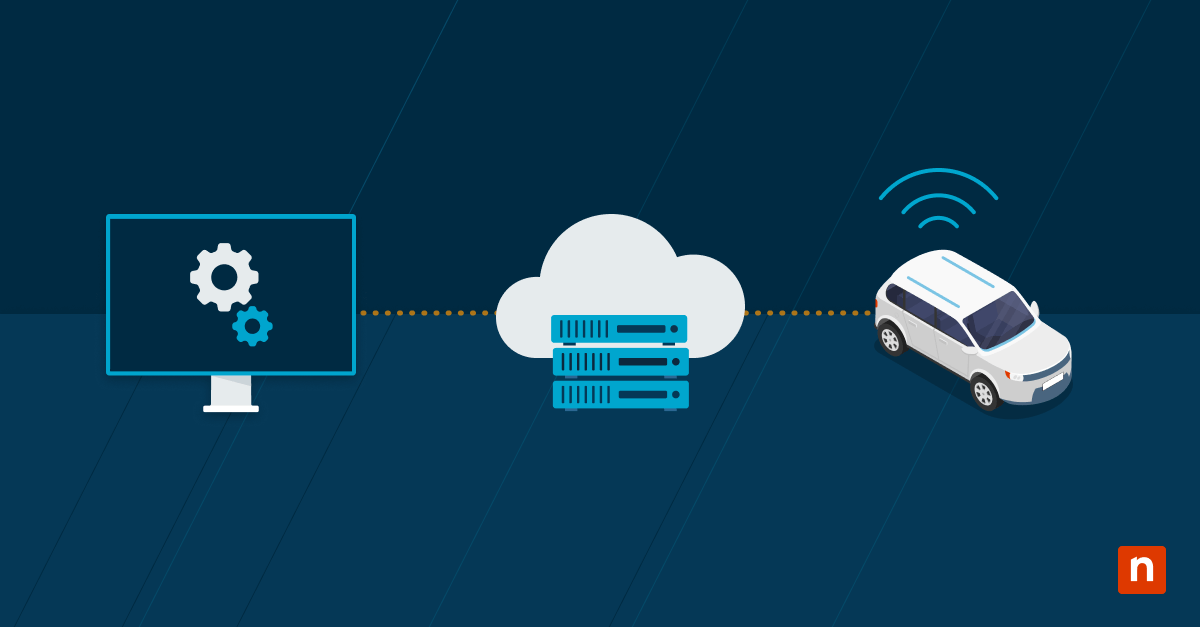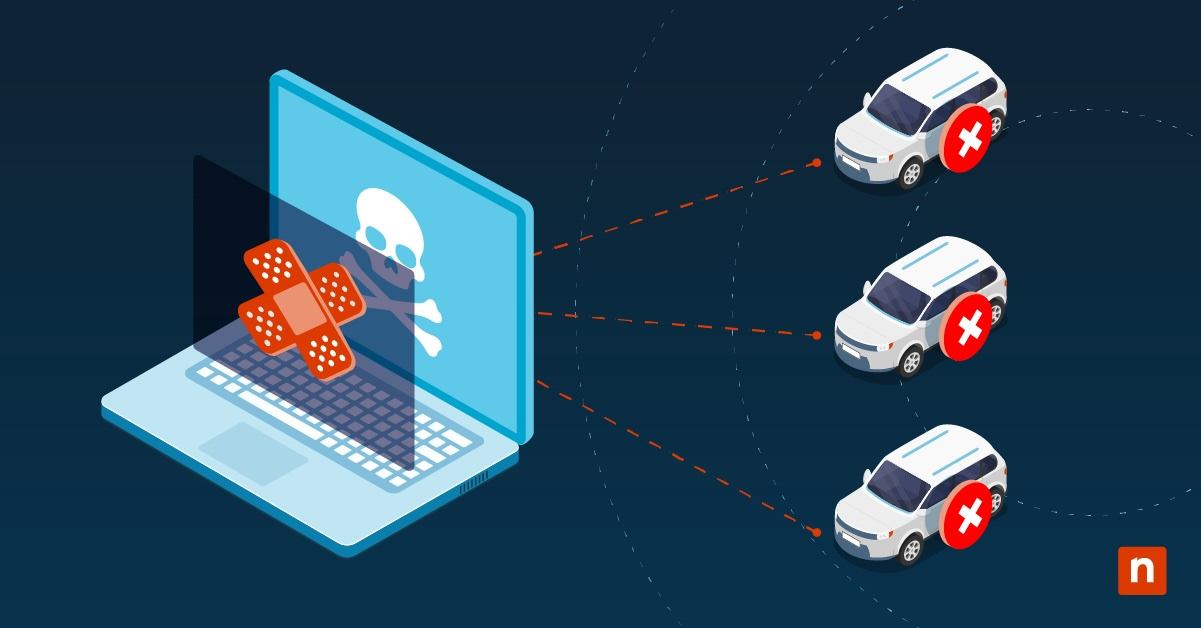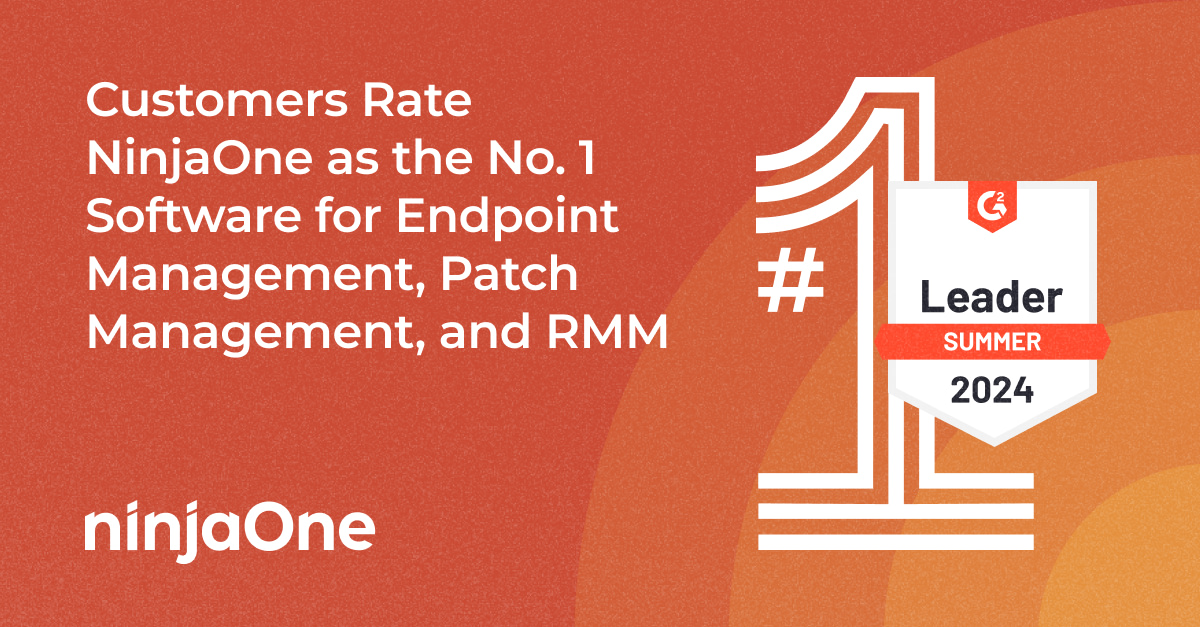In an era where cyber threats loom large, mastering the art of vulnerability prioritization is crucial for safeguarding your valuable systems and data.
As organizations grapple with an ever-expanding list of vulnerabilities, the need to efficiently prioritize patches has never been more pressing.
Our comprehensive guide explores the intricacies of vulnerability prioritization, offering you a roadmap to navigate the complex landscape of potential exploits and ensuring that your organization is fortified against the latest cyber threats.
What this article will cover:
- Understanding vulnerability prioritization
- How to prioritize vulnerability remediation
- Challenges in prioritizing vulnerability remediation
- Best practices in vulnerability remediation prioritization
- Patch management in the context of vulnerability prioritization
A brief overview of vulnerability prioritization
Vulnerability prioritization is the process of evaluating and ranking potential vulnerabilities within a system or network based on their criticality and potential impact.
In an environment where resources are finite, prioritizing and managing vulnerabilities becomes essential to focus efforts on addressing the most significant threats first.
The rationale behind vulnerability prioritization lies in the need to effectively allocate resources, time, and attention to vulnerabilities that pose the greatest risk to the security posture of an organization.
Quantitative and qualitative measures
Effective vulnerability prioritization involves a delicate balance between quantitative and qualitative measures.
While quantitative metrics such as the Common Vulnerability Scoring System (CVSS) provide a numerical representation of a vulnerability’s severity, qualitative aspects like the context in which a system operates, the potential business impact, and the ease of exploitation are equally crucial.
The combination of both quantitative and qualitative measures allows for a more holistic understanding of the threat landscape, allowing organizations to make informed decisions based on the unique characteristics and priorities of their IT environment.
Attack-based vulnerability prioritization
Attack-based vulnerability prioritization involves analyzing vulnerabilities not just in isolation but in the context of how they can be exploited in real-world scenarios.
This approach takes into account the tactics, techniques, and procedures (TTPs) employed by potential adversaries. By aligning prioritization with the likely methods attackers might use, organizations can better fortify themselves against the most plausible and severe threats, enhancing their overall resilience to cyberattacks.
This proactive strategy ensures that resources are shifted to vulnerabilities that are not only theoretically critical but also have a higher likelihood of being exploited.
How to prioritize vulnerability remediation
Assessing the severity and impact of vulnerabilities is a critical part of developing an effective cybersecurity strategy. Understanding the potential risks associated with each vulnerability enables organizations to prioritize remediation efforts and allocate resources efficiently.
Assessing the severity and impact of vulnerabilities
Common Vulnerability Scoring System (CVSS)
Utilize the CVSS as a standardized framework to assess the severity of vulnerabilities. The CVSS provides a numerical score based on various metrics, including exploitability, impact, and complexity. This scoring system serves as a valuable starting point for objectively evaluating the severity of vulnerabilities.
Exploitability and attack vectors
Analyze the ease with which a vulnerability can be exploited. Assess the availability of tools and techniques in the wild that could potentially be used to exploit the vulnerability. Understanding the exploitability factor helps in gauging the immediacy of the threat.
Access and privilege levels
Evaluate the level of access and privileges an attacker would gain if they successfully exploit a vulnerability. High-privileged access can escalate the severity of a vulnerability, particularly if it compromises critical systems or sensitive data.
Aligning vulnerability remediation with business objectives and assets
Organizations should strive to align vulnerability remediation efforts with their broader business objectives and the critical assets that drive these objectives. This strategic alignment ensures that cybersecurity measures not only strengthen the organization’s overall security posture but also contribute to the resilience and success of key business functions.
Understanding business objectives
Begin by gaining a comprehensive understanding of the organization’s business objectives and strategic goals. Identify the core activities, processes, and services that are critical to achieving these objectives. This understanding provides context for evaluating the impact of vulnerabilities on the organization’s overarching mission.
Prioritizing assets based on criticality
Assess the criticality of assets within the organization. Classify systems, applications, and data based on their importance to business operations. Prioritize the remediation of vulnerabilities associated with critical assets, ensuring that resources are focused on protecting the most vital components of the business.
Risk tolerance and business Impact
Consider the organization’s risk tolerance and the potential business impact of a successful exploitation of vulnerabilities. Engage with key stakeholders, including executives and business unit leaders, to establish acceptable levels of risk.
Continuous communication with stakeholders
Foster open communication channels between cybersecurity teams and key stakeholders across the organization. Regularly update executives, department heads, and IT staff on the progress of vulnerability management efforts. This transparency builds awareness and support for the cybersecurity initiatives aligned with broader business objectives.
Integration with IT and business processes
Integrate vulnerability remediation into existing IT and business processes seamlessly. Avoid disruptions to critical workflows by ensuring that remediation efforts align with maintenance schedules, software development life cycles, and other operational processes.
Cost-benefit analysis
Conduct a cost-benefit analysis when prioritizing vulnerability remediation. Assess the potential costs of a security breach against the expenses associated with remediation efforts. This approach enables organizations to make informed decisions about allocating resources to vulnerabilities that present the highest risk and impact.
Importance of timely patching
The urgency of timely patching and a streamlined vulnerability remediation timeline can’t be overstated.
Swift patch application is a crucial defense against potential exploits, minimizing the window of opportunity for cyber adversaries who often target known vulnerabilities.
A proactive remediation timeline plays a pivotal role in mitigating the impact of zero-day vulnerabilities, preventing targeted attacks before patches are available.
Beyond safeguarding against exploitation risks, adhering to a well-defined remediation timeline is essential for maintaining regulatory compliance, averting business disruptions, and enhancing an organization’s overall security posture.
By reducing the attack surface, minimizing remediation costs, and fostering trust with stakeholders, timely patching not only protects digital assets but also contributes to continuous improvement and resilience
Is there a NIST vulnerability remediation timeline?
The National Institute of Standards and Technology (NIST) does not provide specific timelines for vulnerability remediation. Instead, NIST focuses on providing guidelines, frameworks, and best practices for organizations to establish their own risk-based approaches to vulnerability management.
NIST’s publications, such as the NIST Special Publication 800-40 and the Risk Management Framework (RMF), emphasize continuous monitoring, risk assessment, and prioritization based on organizational context.
Organizations are encouraged to develop their own remediation timelines while considering the severity of vulnerabilities, potential impact on operations, and overall risk management strategy, aligning with the principles outlined by NIST.
Challenges in prioritizing vulnerability remediation
Remediation prioritization in cybersecurity is a complex process that involves assessing and addressing vulnerabilities in a systematic manner. Several challenges may arise during this process:
Limited resources
Organizations often face resource constraints — including time, personnel, and budget limitations. Prioritizing remediation becomes challenging when there’s a need to address a large number of vulnerabilities with limited resources.
Complexity of IT environments
Modern IT environments are intricate, consisting of diverse systems, applications, and networks. Understanding the dependencies and interactions between different components can be challenging, making it difficult to prioritize vulnerabilities effectively.
Dynamic threat landscape
The threat landscape is continually evolving with new vulnerabilities and attack vectors emerging regularly. Keeping up with the latest threat intelligence and adjusting remediation priorities accordingly is a persistent challenge.
Patch management challenges
Some vulnerabilities may not have readily available patches, or applying patches may be complex and time-consuming. Organizations must navigate through the intricacies of patch management, balancing the need for security with operational considerations.
Balancing act
Balancing immediate security needs with the organization’s operational requirements is a constant challenge. Remediation efforts must minimize disruptions to critical business processes while effectively mitigating security risks.
Prioritization criteria variability
Prioritization involves setting consistent criteria, which can be challenging. Different stakeholders may have varied perspectives on what constitutes a high-priority vulnerability, leading to potential disagreements and delays in the remediation process.
False positives and negatives
Security assessments may yield false positives (identifying a vulnerability that doesn’t exist) or false negatives (failing to identify an actual vulnerability). Dealing with these inaccuracies complicates the prioritization process and may divert resources from more critical issues.
Legacy systems and technical debt
Organizations often have legacy systems with inherent vulnerabilities that are challenging to remediate due to compatibility issues or lack of support from vendors. Technical debt can hinder the timely resolution of vulnerabilities in such environments.
Regulatory compliance
Meeting regulatory requirements adds an additional layer of complexity to prioritization. Organizations must align remediation efforts with specific compliance standards, potentially diverting resources away from vulnerabilities that may be more critical in the immediate context.
Human factor
The effectiveness of remediation efforts can be influenced by human factors, such as the skill levels of the security team, awareness among employees, and the organization’s overall cybersecurity culture. Addressing these factors is crucial for successful remediation prioritization.
All told, addressing these challenges requires a comprehensive and adaptive approach, integrating risk management principles, collaboration among stakeholders, and leveraging advanced technologies for efficient vulnerability assessment and remediation.
8 best practices in vulnerability remediation prioritization
1. Establish a risk-based approach
Prioritize vulnerability remediation based on the risk posed to your organization. Consider factors such as the potential impact on critical systems, the sensitivity of data at risk, and the likelihood of exploitation. By focusing on high-risk vulnerabilities, you can allocate resources more efficiently.
2. Use a comprehensive scoring system
Implement a scoring system that combines quantitative metrics like the Common Vulnerability Scoring System (CVSS) with qualitative factors. This holistic approach allows for a more nuanced understanding of vulnerabilities, considering both their severity and the specific context of your organization.
3. Continuous monitoring and threat intelligence integration
Establish a continuous monitoring process to stay abreast of the evolving threat landscape. Integrate threat intelligence sources to identify active exploits and emerging vulnerabilities. Regularly update your prioritization strategy based on real-time information to address the most relevant threats.
4. Asset criticality and business impact assessment
Consider the criticality of assets within your organization and assess the potential business impact of each vulnerability. Prioritize remediation efforts on systems and applications that are integral to core business functions, ensuring that critical assets are adequately protected.
5. Patch management efficiency
Streamline the patch management process to ensure timely and efficient remediation. Develop a robust patch management strategy that includes testing patches in a controlled environment before deployment. Automate where possible to reduce manual errors and speed up the remediation timeline.
6. Collaboration and communication
Foster collaboration between IT, security teams, and other stakeholders. Ensure clear communication channels to convey the rationale behind prioritization decisions. Collaboration enhances the overall effectiveness of remediation efforts and promotes a unified approach to cybersecurity.
7. Regular vulnerability assessments
Conduct regular vulnerability assessments to identify and prioritize new threats. Regular scans provide insights into the evolving security landscape and help update the prioritization strategy based on the latest vulnerabilities and their potential impact.
8. User education and awareness
Invest in user education programs to enhance cybersecurity awareness within the organization. Educated users are more likely to report vulnerabilities promptly, reducing the time it takes to identify and remediate potential threats.
Adhering to these best practices can help organizations establish a proactive and adaptive approach to vulnerability remediation prioritization, effectively managing risks and maintaining a robust cybersecurity posture.
Patch management in the context of vulnerability prioritization
Patch management is a crucial component of cybersecurity that involves the systematic process of identifying, acquiring, testing, and applying patches to software systems to address vulnerabilities and enhance overall security.
In the context of vulnerability prioritization, effective patch management becomes a strategic and targeted approach to fortify an organization’s defenses against potential exploits.
Strategies for applying patches based on prioritization
Risk-based patching
Prioritize patching based on the risk posed by vulnerabilities. Leverage risk assessments and prioritize patches for vulnerabilities with a higher likelihood of exploitation and a potentially severe impact on the organization. Aligning patching efforts with risk levels ensures that critical vulnerabilities are addressed promptly.
Utilizing a scoring system
A scoring mechanism — such as those discussed in previous sections — aids in ranking vulnerabilities and allows organizations to apply patches systematically, focusing on the most critical issues first. It combines both quantitative and qualitative measures to inform patch prioritization decisions.
Asset criticality and business impact
Consider the criticality of assets and the potential business impact when prioritizing patches. Allocate resources to address vulnerabilities in systems that are integral to business operations and could result in significant disruptions if exploited. This strategy ensures that patching efforts align with the organization’s operational priorities.
Automated patching for critical systems
Implement automated patching solutions for critical systems to reduce response times. Automating the deployment of patches ensures that critical vulnerabilities are addressed promptly, minimizing the window of exposure. This is especially important for systems that handle sensitive data or are crucial to the organization’s mission.
Threat intelligence integration
Integrate threat intelligence into the patch management process. Stay informed about active exploits and emerging threats to adjust patching priorities accordingly. This proactive approach ensures that organizations are addressing vulnerabilities that are actively being targeted in the wild, enhancing their resilience against evolving cyber threats.
Regular monitoring and adjustment
Establish a continuous monitoring process to reassess the effectiveness of patching strategies. Regularly review the threat landscape, the impact of applied patches, and any new vulnerabilities that may have emerged. This iterative approach allows organizations to adapt their patching priorities based on real-time information.
Automated patching: Benefits now and in the future
The future of automated patching holds great promise in revolutionizing cybersecurity by streamlining and enhancing the patch management process.
Leveraging advanced technologies and artificial intelligence, automated patching systems can swiftly identify vulnerabilities, assess risk, and deploy patches in real time.
This proactive approach not only reduces the window of exposure to potential threats but also minimizes the burden on IT teams, allowing them to focus on strategic security initiatives.
The potential benefits include increased agility in response to emerging threats, improved compliance adherence, and overall strengthened resilience against evolving cyber risks.
As organizations continue to embrace automation, the future landscape of cybersecurity is poised to benefit significantly from the efficiency, speed, and accuracy that automated patching solutions offer.
In summary
The effective management of vulnerabilities and the timely application of patches are paramount in safeguarding organizations against ever-evolving cyber threats.
As discussed, aligning remediation efforts with business objectives, prioritizing vulnerabilities based on risk, and embracing automated patching technologies represent essential strategies for fortifying your cybersecurity posture.
The future of cybersecurity lies in the continued integration of advanced technologies, such as automated patching systems, offering a proactive and adaptive approach to threat mitigation.
By recognizing and embracing the interconnected nature of cybersecurity and business resilience, organizations can navigate the complex landscape of vulnerabilities with strategic precision, ensuring a secure and robust digital environment for sustained success.

